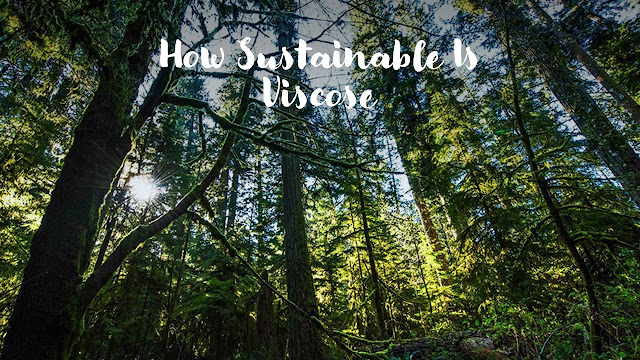
Sustainability is one of the key drivers in buying a product as a responsible consumer. Because we are all aware of the environmental impacts these products have on manufacturing, maintaining and disposing of them. Thus for a product to be considered as a sustainable option, it has to be catered to all the above processes. In apparel, viscose is one of the most questionable fibre when it comes to sustainability. This is because of the several criticisms it faced passed a few decades. With viscose adding to a fair share of use worldwide it becomes very important to know how sustainable it is.
What is viscose?
Viscose is a type of rayon fibre which was first introduced the late 1800s and was patented as artificial silk due to its filament and lustre. It is a regenerated cellulosic fibre that is made from a natural source of cellulose such as wood, related agricultural products and recently cotton waste. It has the same molecular structure as that of cellulose but due to the chemical process, the polymeric structure gets aligned to create filament fibre of viscose.To discuss the sustainability of viscose the fibre has to be judged based on the category in manufacturing, maintaining and disposal, and only then any kind of comparison can be made.
Manufacturing of viscose
Viscose was one of the first cellulosic fibre which was made back in the late 1800s. The process of making viscose starts with the raw material, primarily wood pulp which is chemically converted to a soluble compound. This compound is then dissolved and forced through a spinneret to produce filament which is chemically solidified to convert them into cellulosic fibres. But during the manufacturing of viscose, toxic chemicals such as Carbon Disulphide and sulphuric acid is used which can be very dangerous if released to the environment.Even improper handling of carbon disulphide can have a serious effect on the worker. Along with this, there are several other chemicals involved in the processing and cleaning of the fibres. This has caused several incidents and legal cases in the past. But since then, the technology has evolved in the direction to collect all the chemicals used in a controlled way for reuse, resulting in lower emission of carbon disulphide and other chemicals. It was this reason that much of the viscose manufacturers have shifted towards developing countries with flexible laws.
Since then new types of rayon such as Lyocell, Modal, Tencel etc. have emerged which uses similar chemicals but the process has been improved to reuse a higher amount of the chemicals used. Also a little can be said about the procurement of raw material i.e. wood for most of the viscose manufacturer because of their sourcing through an unregulated process. But brands such as Lenzing, Birla Cellulose etc. are known very well in the industry for their traceability and can be easily trusted for the use of responsible wood sourcing for manufacturing of viscose. These viscose are costly but it assures the use of certified raw material and is much sustainable than any generic viscose. This information can be found on the tags and care labels of the garment or fabric and should always be preferred.
Related: Textile Recycling: Companies Pioneering in Recycling Technologies
Maintenance of viscose products
For a fabric to be considered sustainable, during its use period the care process has to require a minimum of resources. Viscose is a cellulosic fibre and its fabric is delicate and requires special care to avoid any pilling, shrinkage or deformation during washing, drying or ironing.With viscose being a delicate fabric, especially when wet it is best when hand washed in cold or lukewarm water (~20oC) instead of machine wash. For machine wash as an option, the machine setting should be put to delicate cycle or hand wash program. This ensures a minimum of resource spend on wash and care of the fabric.
Also, it is advisable not to put viscose fabric in dryer and dry best when kept flat or on a hanger. For ironing also, it requires lower temperature (~110oC) thus consuming much lower power. All the above factors add to a lot less use of resources for its maintenance compared to other fibres making it a much more sustainable option among the rest.
Disposal of viscose products
Several researches have been done on bio-degradability of various fibres from time to time and it has been found that the bio-degradability of viscose is similar to that of natural fibres such as cotton.Depending on the environment viscose is either slightly more or less biodegradable than that of cotton. These factors mostly depended on hydrophilicity and internal structure of the fibre. The decomposition of viscose also leads to the growth of micro-organism on the surface which accompanies for lading and weakening.
In the cleaning process during manufacturing, since most of the chemicals are washed away there are no chemicals left in the fabric which can add to the risk of mixing with the soil leading to contaminations. Thus, overall easy decomposition and the absence of chemicals added to a comparative sustainable option.
